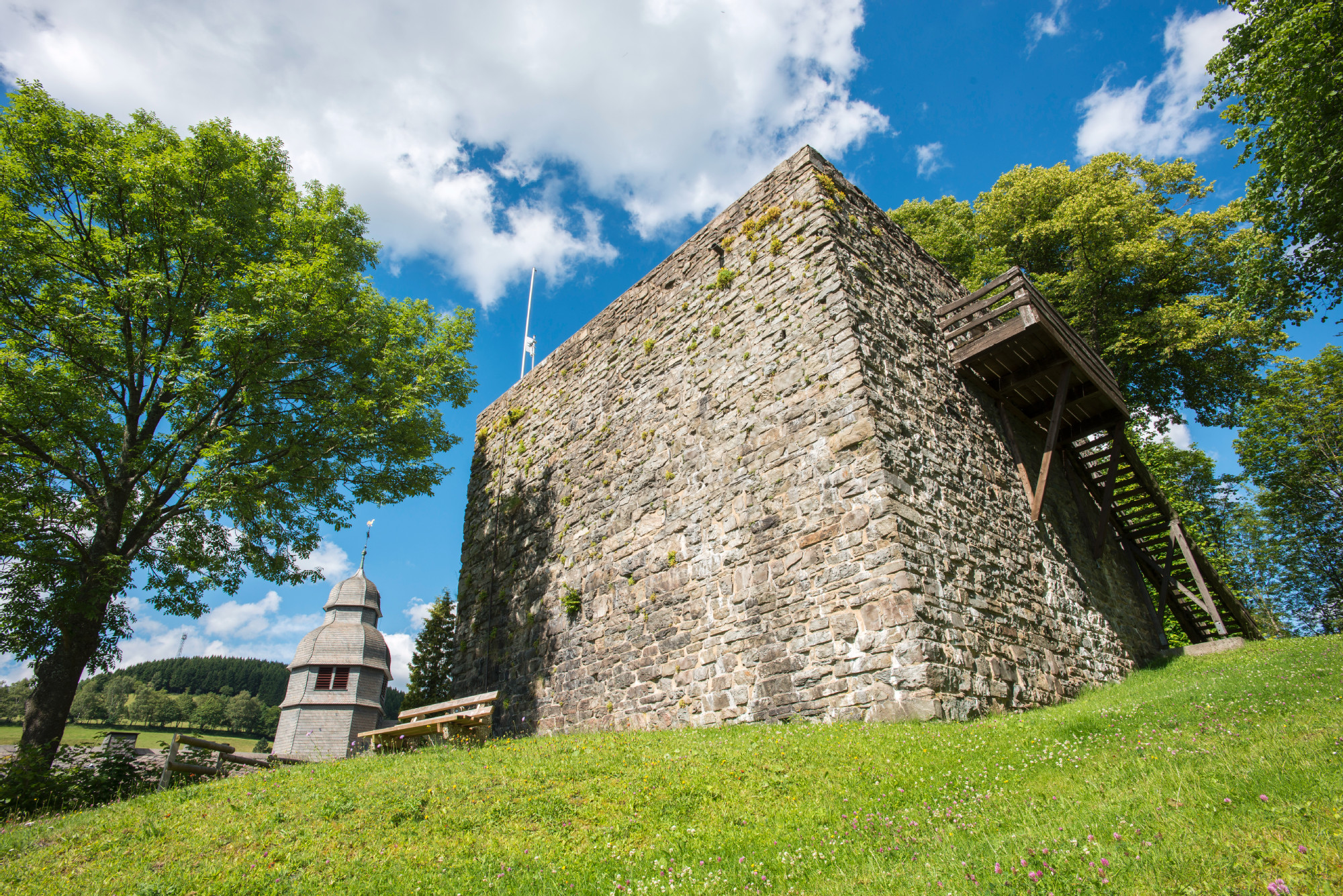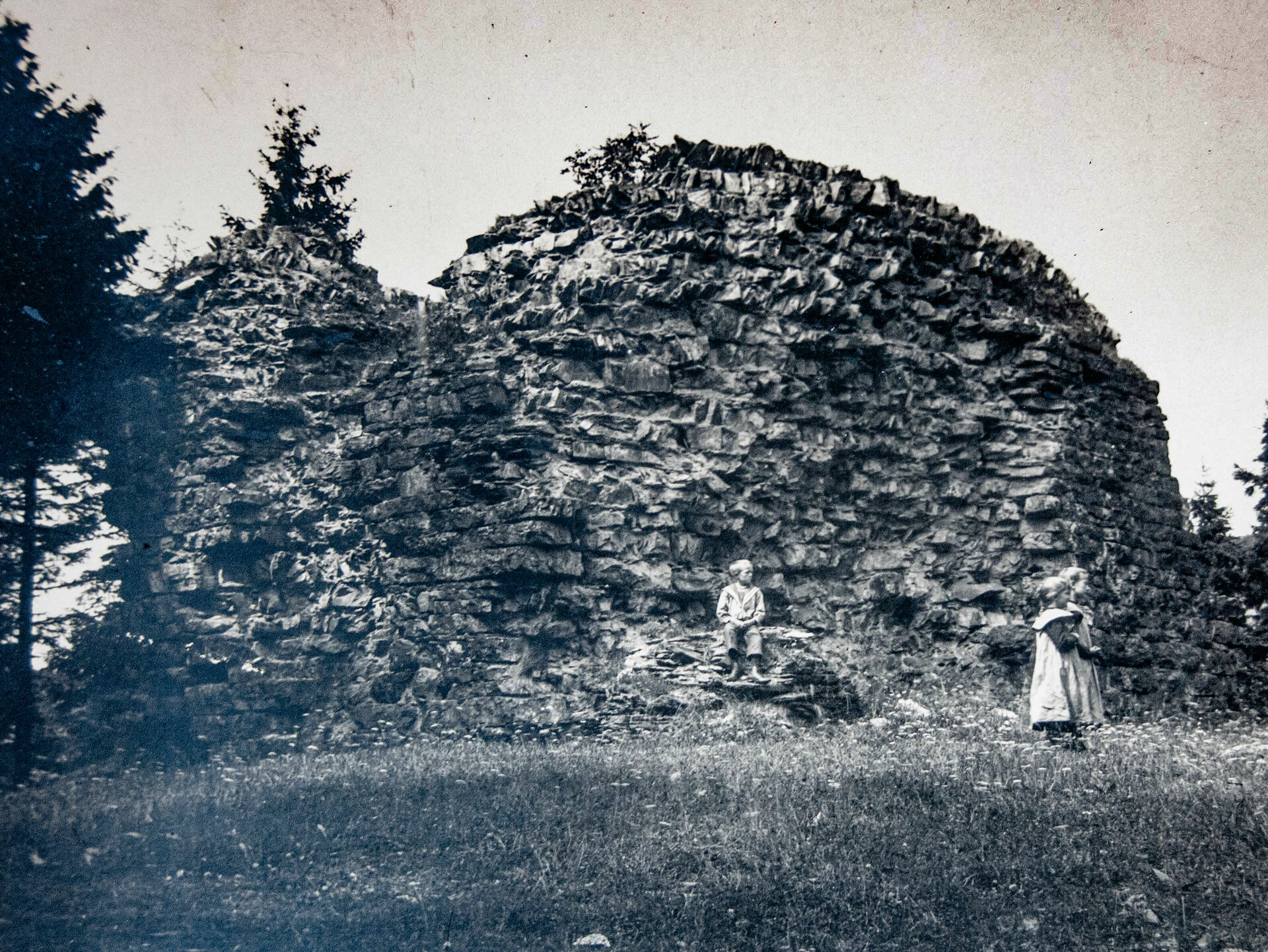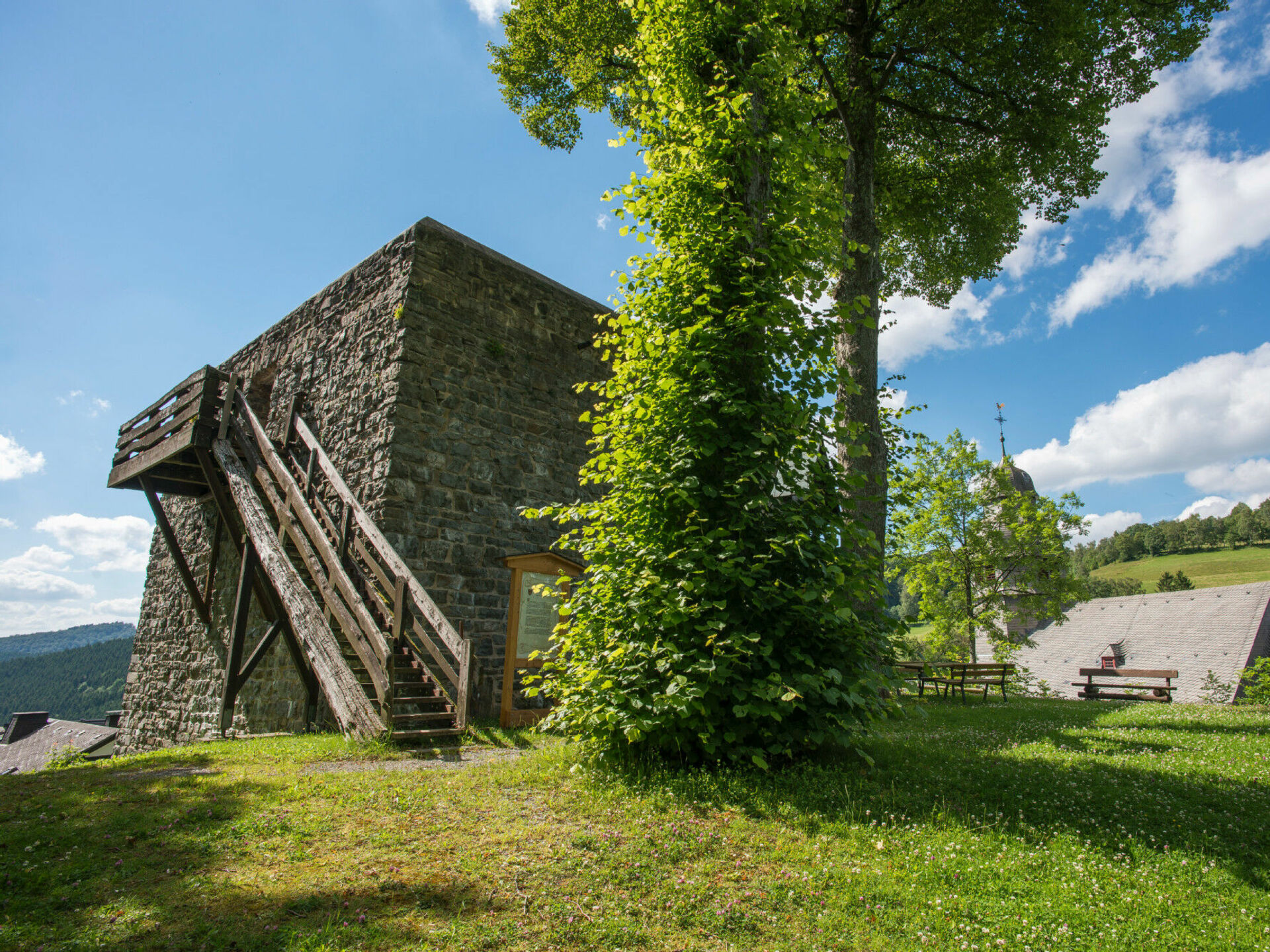Rappelstein Castle
Counts and noblemen in Nordenau
Rappelstein Castle fell into disrepair for around 600 years: despite this, the foundation walls look almost as if they had just been built. This speaks for the masonry skills of the 13th century - and makes the castle ruins an enduring landmark in Nordenau. The square gray block above the church can be seen from afar. The builders had a good view from their hilltop castle of the so-called Heidenstraß.eThe noblemen of Grafschaft supervised an important trade route that led from Köln via Kassel to Leipzig. They called their castle "Norderna". But the power of the medieval noble family did not last long ...
The construction of the castle marks the high point in the family history of the noblemen of Grafschaft. They were bailiffs in the service of the Count of Arnsberg. Bailiff Adolf I had Norderna Castle built in 1260. The medieval criminal justice system, the Femegericht, was located here. The important trade route was also easy to control.
Adolf's successors, the brothers Kraft I and Widekind, were less successful and had to mortgage their property. Part of the castle went to the Counts of Waldeck. This was followed by battles with the counts, disputes with the archbishopric, financial problems and changes of occupants. In 1471, the noblemen moved to Ober-Ense and eventually died out completely. Norderna Castle falls into disrepair. In the 18th century, the Prince of Waldeck only retains the right to hunt deer and pigs. The people of Norderna are allowed to use the castle and grounds. They use the stones to build houses and stables. Only the defiant keep remains largely intact.
The square keep on the Rappelstein was a stately building in the Middle Ages. The 2.5 m thick walls made of greywacke, a sandstone containing quartz, are grouted with lime mortar and are 12 m long on each side. The lord of the castle probably extended an existing building. According to research, the wood dates from around 1100.
The tower was originally higher. The ground floor was filled with stones. The storeroom was located above it. An elevated entrance led to the residential floor on the 3rd floor. There was a fireplace on the east wall and a window facing north. Records mention further residential floors.
To the west of the tower was a gate, to the right of which was the "house" of Kraft I. ("de kemmenade wan man int der Burgk gehet"). In 1284, a "stone Kemnade" was added by Widekind. The entire complex comprised two castles, which were surrounded by a wall and a deep moat.
In 1967, the fortified ruins became a viewing platform.
Adolf I was the first bailiff of the noblemen of Grafschaft. He had the preserved keep built. His successors divided the property and lived together in the castle. They concluded various alliances. For example, the troops of the Count of Arnsberg were allowed to camp in the castle from 1297. Archbishop Walram was granted the same right for another part of the fortress in 1338. Finally, Count von Waldeck received several parts of the castle. This is where it gets confusing. The grandson of the builder, Johann II, owned a part at this time and wanted to use it. (After all, he had 11 children!) Count Waldeck took Johann prisoner, but quickly released him and compensated him with half of the castle. However, Johann had to rent it out and Waldeck's soldiers continued to live there. It must have been very crowded at times. In 1471, the hustle and bustle came to an end and the castle, which was in a state of disrepair, fell to pieces apart from the keep.
Vertelleken
Chatting out of the sewing box...
"
For centuries, the people of Nordenau saw the castle ruins as a practical source of building material. It was not until around 1900 that archaeological excavations were carried out, during which historic walls were uncovered. Then, in 1926, a small sensation: an archaeologist found a Romanesque bronze bowl about 30 cm in diameter. It is elaborately decorated with a story based on Ovid's Metamorphoses and depicts an ancient romance in four pictures: Pyramus wants to meet Thysbe under a mulberry tree. But all he finds there is her veil. Thinking she has been eaten by a lioness, he plunges into his sword. When Thysbe arrives, it is too late and she also takes her own life. Superbia, the arrogant one, is dripping in the center of the bowl. Researchers suspect that the bowl was used in everyday life, perhaps as an ornament or as tableware. It is now in the Westphalian Museum in Münster. Photos of it can be found in the Haus der Heimat in Nordenau."








